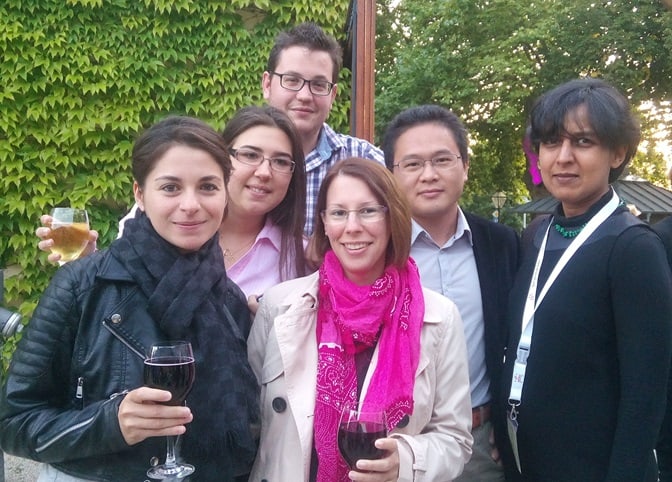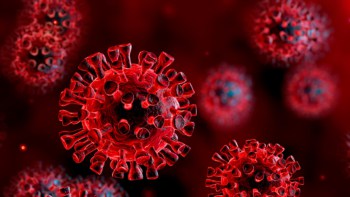
T lymphocytes, or T cells, are an essential subset of white blood cells that play an important role in human immunity. At a very elementary level, one can think of T-cells as the immune system’s infantry: they actively seek out and identify disease and mount more and more effective defence against subsequent attacks.
T-cells begin life in the thymus, hence the “T”, where they are trained for their job. The T-cell identifies friend or foe by looking for specific molecules, called antigens, found at the surface of offending cells. T-cells then trigger the entire immune machinery to counter the disease and, fascinatingly, to keep a memory of the attack — a feature that is exploited for vaccination.
To do its job of identification, a T-cell needs to make intimate contact with its target, the cell presenting the antigen, by spreading on it. For a long time, the propensity for any cell to spread has been known to depend not just on the chemistry of the antigens at the cell surface, but also on the tactile forces that the interacting cells exert on their environment.
Sensitivity to mechanical cues has been demonstrated for a large number of cell types and this so-called mechanosensitivity has been linked to the T-cell’s ability to identify disease. But the jury is still out as to whether or not the extent of T-cell spreading increases or decreases with the stiffness of the surface over which they spread.
A new spread of experiments
Researchers from the Centre Interdisciplinaire de Nanoscience de Marseille have reported the most comprehensive set of experiments yet demonstrating the importance of substrate stiffness in cell spreading (PNAS 10.1073/pnas.1811516116).
The researchers first prepared substrates from polydimethlysiloxane (PDMS) substrates, a biologically inert material that can easily be made with a dynamic range of Young’s moduli. They created substrates with an unprecedented range of stiffness: 0.5–7000 kPa.
Next, the team functionalized the PDMS surfaces with specific proteins to form a reconstruction of the antigen-resenting cell surface. Importantly, they functionalized the PDMS with chemistry specific to T-cells, not the generic mechanism of cell spreading, known as integrin mediated adhesion, that’s found in all cells.
T-cells seeded on such surfaces exhibited a bi-phasic response to substrate stiffness. The researchers found that the maximum spread area of the cells increased with substrate stiffness up to 5 kPa, and then decreased for further increases in stiffness.
In the next set of experiments, the researchers reintroduced the integrin-mediated adhesion molecules to the PDMS surface and found that the biphasic response of the T-cells to substrate stiffness was lost. Instead, cell spreading was seen to increase monotonically with substrate stiffness, thus restoring the classical, integrin-mediated, cell-spreading behaviour.
Getting the spread on the data
To explain this curious behaviour, the team developed a physical model to describe the competition between the adhesion bonds at the cell substrate interface and the substrate elasticity.
They found that to generate the biphasic behaviour demonstrated by T-cells, the bond adhesion needed to be stiff and highly sensitive to force. Interestingly, the authors suggest that such mechanosensitivity could arise from the link between the binding sites of the adhesion molecules and the cell’s cytoskeleton, rather than the bond between receptors and their counterparts alone.
This result places new importance on the tactile interactions between cells and the surfaces (or pathogens) that they spread on.
“The importance of these results comes from the fact that the diverse response of T cells to the mechanics of their environment is not due to the cell type but to the mechanics of the adhesion molecules,” says second author Celine Dinet. “And even though the classical behaviour is not so clear, it is related to the type of adhesion molecules used.” The new knowledge gained “should inform future studies on T cell mechanoresponse,” she adds.




